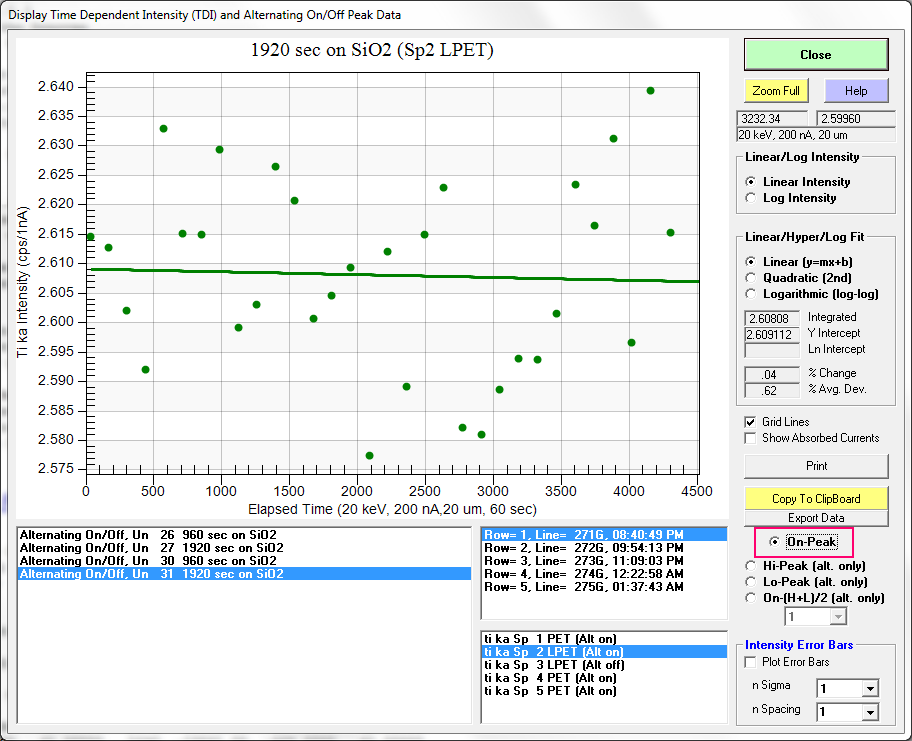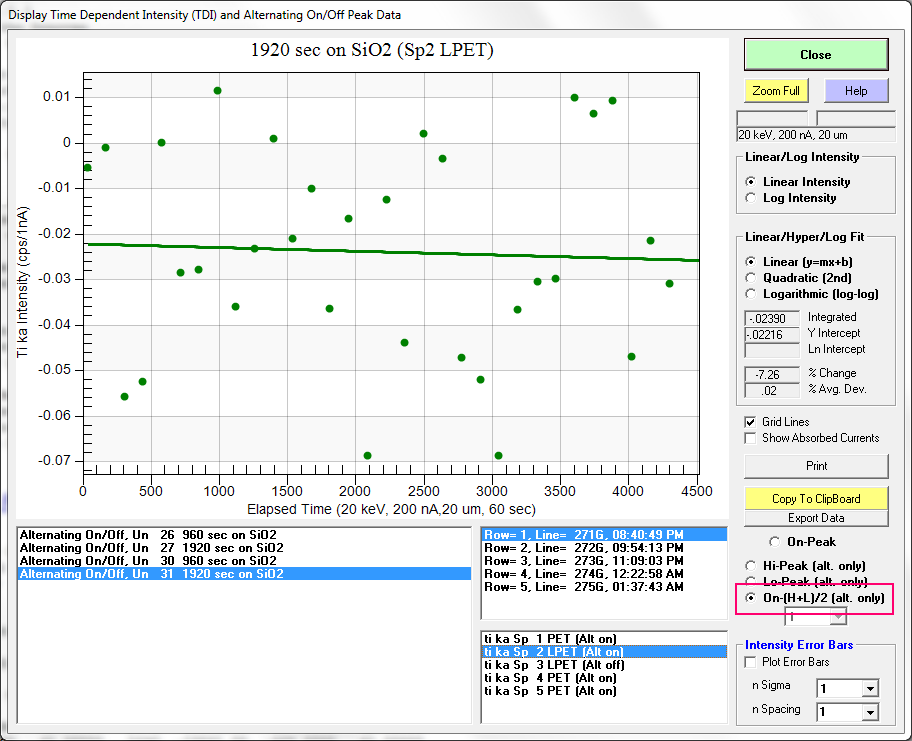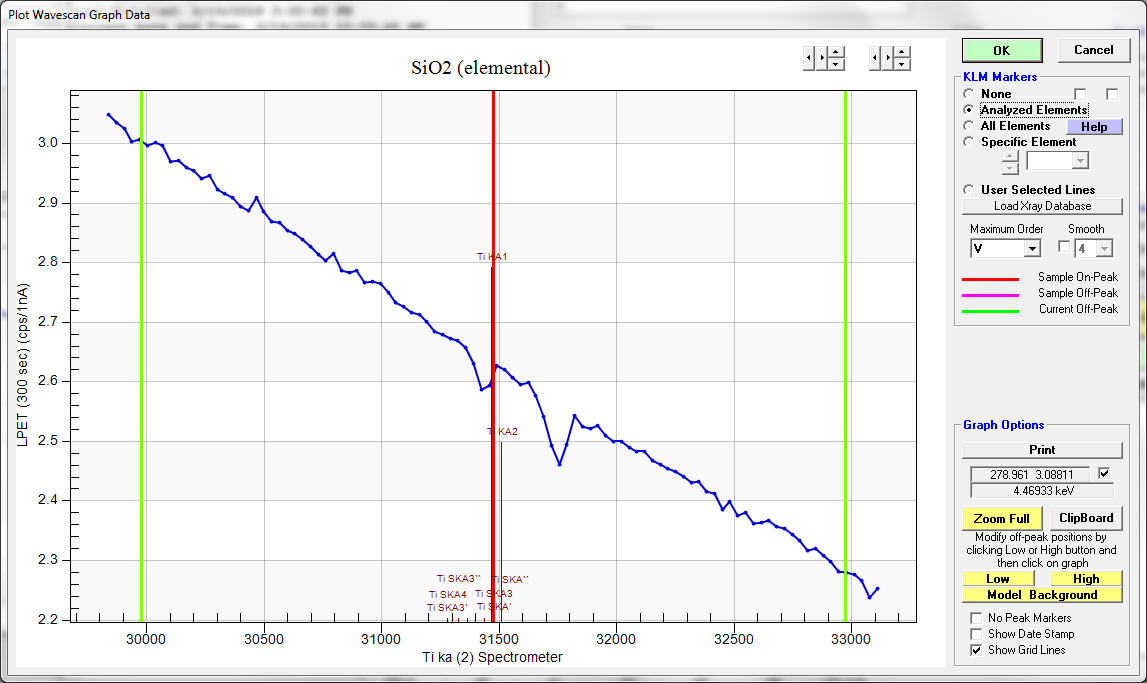Attached below is a recent paper that looks at Ti and Al trace element measurements in quartz.
The authors did a good job covering the several issues affecting accuracy for this analytical situation (e.g., beam damage, TDI effects), and confirmed other issues covered in prior work (background artifacts, secondary fluorescence effects). I can confirm that using a 20 um beam the beam damage effects on Al and Ti are negligible as seen here for the alternating on/off, on-peak only intensities:

and here for the alternating on/off, on minus off peak intensities:

The main difference being that the variance increases when the off-peak background correction is applied as expected since the variances add in quadrature. In fact their data (fig 4) indicates that beam diameters as small as 5 um are totally suitable for quartz, even at 500nA of beam current!
It was also interesting that they did not observe a "hole" in the continuum on their PETJ crystal (note also the unfortunate typo on page 2 where they mention Ti Ka TAP), and since the presence of this continuum artifact may depend on the mounting orientation of the PET crystal during manufacturing, they may have gotten lucky. However I suspect this was because they did not acquire a sensitive enough wavelength scan. They utilized only 5 sec per point in fig 2, but we utilized 300 sec per point as seen here:

It would be interesting obtain additional high precision Ti Ka PET scans from other labs to see how often this hole in the continuum appears. I note that the hole is visible in both of my LPET crystals, but not in any of the normal sized PET crystals. Could this artifact be related to Bragg crystal size? Can anyone share additional observations on this question?
However, they made an interesting claim that "The use of blank corrections is not often possible due to the lack of suitable blank samples in most laboratories." I find this a little strange since it is trivially easy to obtain ultra pure SiO2 these days, for example Karsten Goemann utilizes the Spectrosil glass material for a blank:
https://probesoftware.com/smf/index.php?topic=130.0The point being that if you don't measure a blank when performing trace element analysis it is not easy to know one's accuracy. Yes, one may not have available a suitable matrix matched blank for monazite trace analysis, but for quartz that is not the problem.